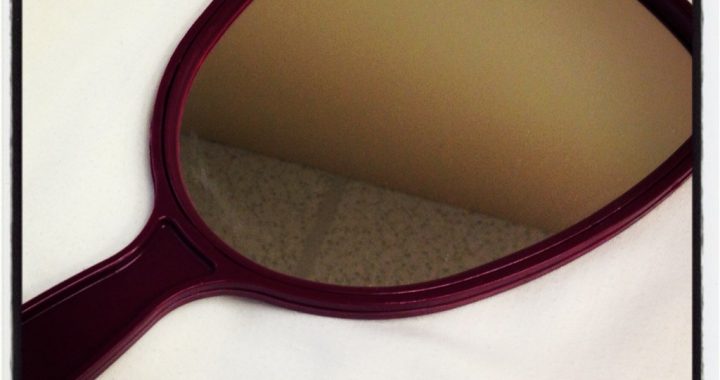So you’ve signed up to see a pelvic therapist. You’ve read the website, scoured the internet and feel ready (sort of) for your first visit. You are prepared for the frank talk about your bathroom habits and even for the talk about whether you have pain during sex. You know there will be a pelvic exam and you are mostly prepared for that, especially after your therapist shows you the pelvic model and pictures galore about your pelvic anatomy. And then your therapist hands you a mirror and says ‘I’d like to show you your own anatomy so that you can learn more about how to do your homework.’
Yikes! Seems like a strange request, and is not always in everyone’s comfort zone. But before you think of all of the reasons NOT to use a mirror, consider first the many benefits:
Get a baseline: If something doesn’t feel right ‘down there,’ whether it is painful or feels like things are falling out, it’s important to know what your ‘normal’ looks like. Bear in mind that every woman looks different. No clue what you are looking at? Don’t feel bad- you’re not alone. Health class may cover our reproductive organs, which is great, but there’s not a lot of education about what or where the labia, perineum or clitoris is located. Check out this link for a great tutorial on the vulva and external genitals to get started: https://www.youtube.com/watch?v=L3JE8oj_bWI
Get comfortable with your body: Your genitals are part of you. Making a visual connection with your body can help you learn how to use your pelvic muscles and improve your body awareness. Sometimes pain in the abdomen and/ or pelvis can make women avoid the vulva and vagina or consider them as separate from the body. Looking at the genitals but also at your body from the rib cage to the knees can be helpful to reconnect with a body part that has been exiled due to pain.
Retrain your brain: Emerging research in neuroscience suggests that pain and/or fear of the pain is dictated by the brain. Use of dilators (tapered plastic or silicone wands of different sizes) may be recommended for gradual return to intercourse. For those who feel comfortable, using a mirror may help to identify your anatomy for ease of dilator insertion and allow transition to penetrative intercourse and use of tampons without pain. Remember getting your ears pierced? In the beginning you may have been nervous or needed to look in the mirror to remove or change your earrings- but over time you learned how to do it easily. Using dilators in a graded way is a similar concept.
Monitor for changes: Hormonal changes while breast-feeding and during menopause can cause changes to our vaginal tissue. Dryness, redness and atrophy (shrinking of the labia, or lips, of the vagina) can be identified by taking a look.
Communication with your gynecologist, nurse practitioner or midwife: If your back hurt, burned, or didn’t allow you to do something, you would snap a selfie, ask your husband or a friend what it looks like, try to position yourself in the mirror and then google it to figure it out. And then you would talk about it in detail with your doctor if you required additional medical care. Give your vulva and vagina the same courtesy. Take a look so you can talk more openly with your health care provider- it will help them help you!
Sexual pleasure: Perhaps the thought of using a mirror is far from erotic. But consider this: the more you know about your pleasure zones the more you can teach and direct your partner to those areas! If you have had pain and are just beginning to discover the pleasurable side of intimacy, a mirror can help you identify those areas that feel good to touch. If your body has changed following childbirth, surgery, or menopause, the mirror may help you rediscover erogenous areas and perhaps find some new ones as well.
It could save your life: Some symptoms in the genital region are quite common and are treatable. However, others may signify more serious changes. Rashes, sores or other skin changes may be associated with serious vulvar conditions. Warts may result from the human papilloma virus (HPV), which has been linked to cervical cancer.
We know the mirror isn’t for everybody. But consider its importance- it is an excellent re-training tool for those who are receptive to it and learn well from visual cues. It’s not a substitute for medical care but can help you observe changes if you are having new symptoms. A mirror can help you to learn your body for the first time or reacquaint you with it after life changes such as pregnancy and menopause. So go ahead- take a look!

